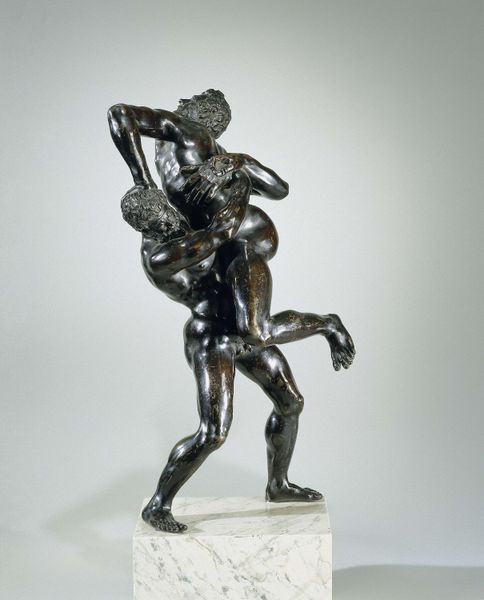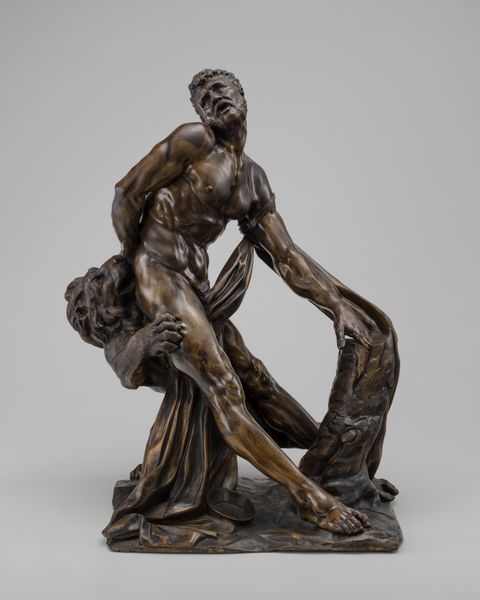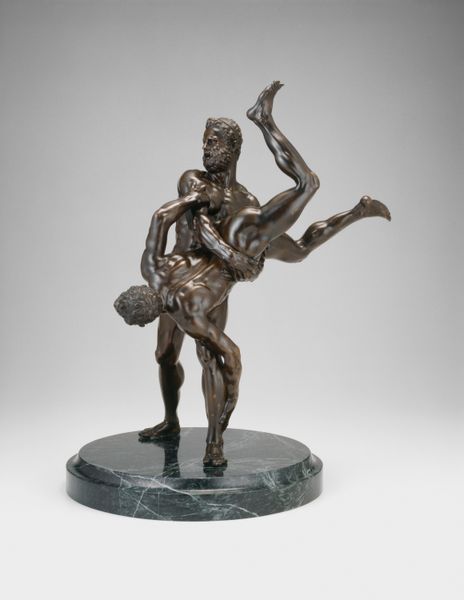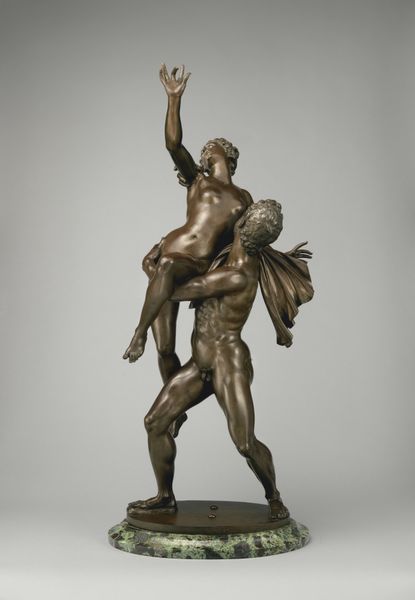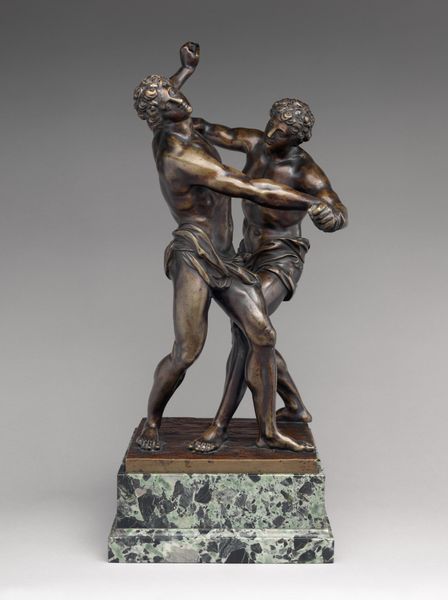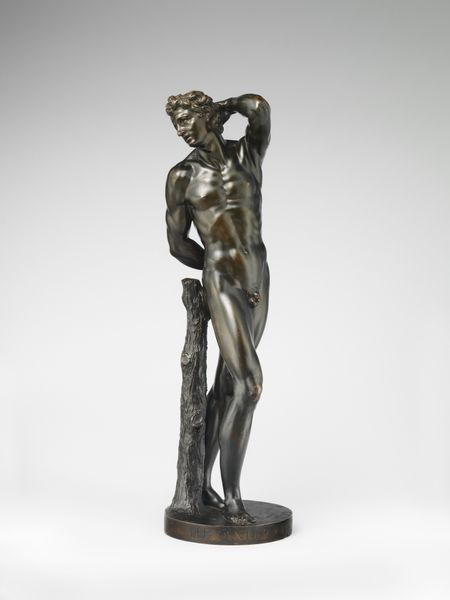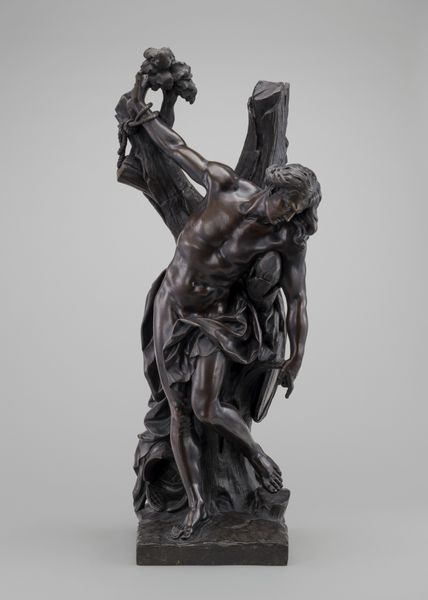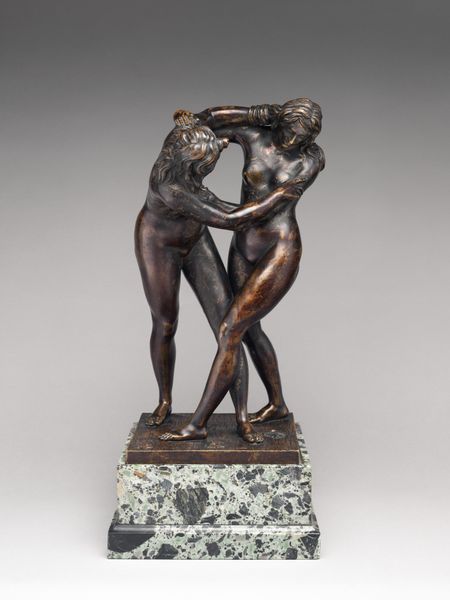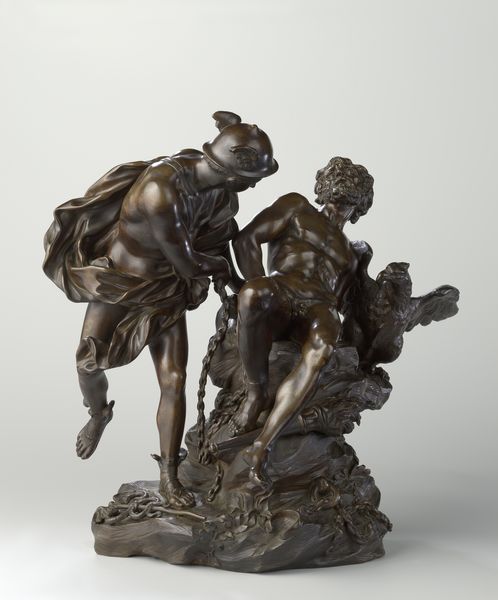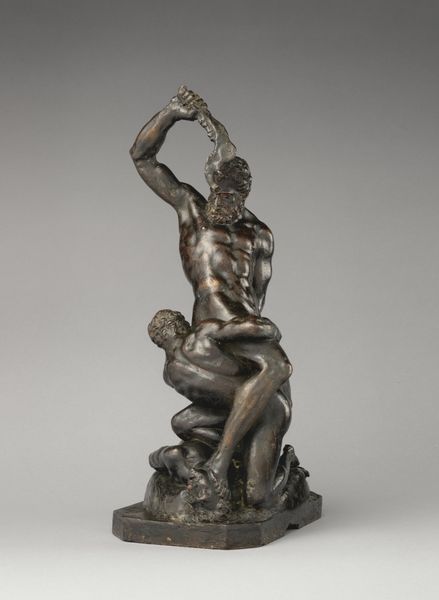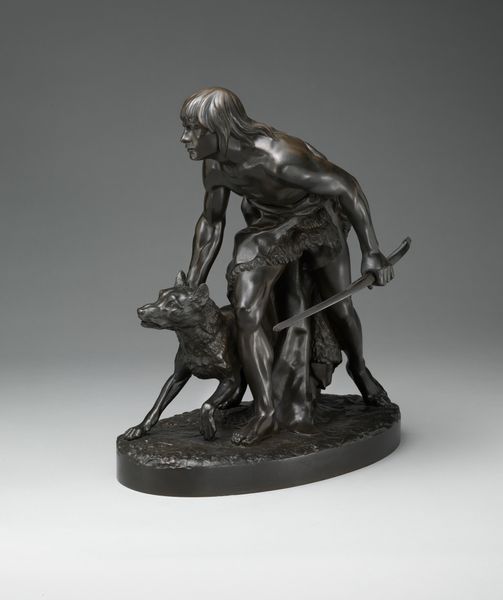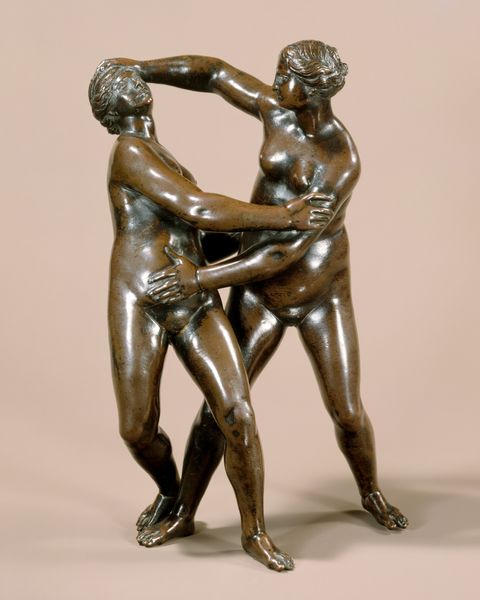
bronze, sculpture
#
sculpture
#
bronze
#
mannerism
#
figuration
#
sculpture
#
history-painting
Dimensions: H. 48.6 cm (19 1/8 in.)
Copyright: Public Domain
Editor: Here we have "Hercules and Antaeus," a bronze sculpture, likely made between 1600 and 1625. The tension in this sculpture is palpable. It looks like it captures a decisive moment in the struggle. How would you interpret this work from a materialist perspective? Curator: Excellent observation! Let’s look at this bronze not just as an object representing a mythological story, but as a product of labor and technology. The bronze itself is crucial. How was it mined, smelted, and cast? Consider the physical exertion, the skill required, and the social organization needed to produce this sculpture. Who were the laborers? Where did they get their resources, and what did this say about trade and power relations? Editor: So, you’re saying it’s not just about the heroic narrative, but the behind-the-scenes making of the sculpture itself? Curator: Exactly. The means of production shape the message. A bronze suggests wealth and patronage, and it reflects on the artist's, and their patron’s access to resources. Then look at its purpose. Where was it meant to be displayed? Was it part of a larger collection? How does the location it would have been displayed impact the message it was intending to convey. The scale and the sheen of the bronze point towards luxury and the patron's ambition to be recognized as wealthy. What can we learn about the society that valued this level of craftsmanship and the raw materials involved? Editor: That's a perspective I hadn’t considered before. It shifts the focus from the mythology to the actual process. Curator: And by analyzing the process, we start to understand what values the piece was used to transmit at the time, like wealth, status, social class. Do you find that approach convincing? Editor: Absolutely! It opens up a whole new avenue of inquiry. Thank you. Curator: My pleasure. It always does when we interrogate labor, class, materiality and the social power encoded in a work of art!
Comments
No comments
Be the first to comment and join the conversation on the ultimate creative platform.
